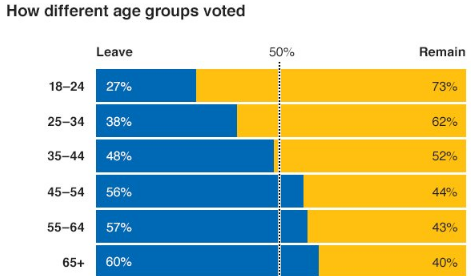 There are no universal rules governing mediation agreements. Individual ADR providers have policy statements about the conduct of their mediators. State and federal bar associations publish ethical rules for mediators and mediation advocates. But there are no rules mandating specific steps that must be taken during any particular mediation – nothing akin to the stepwise procedural rules, which govern judicial proceedings. Like everything else there are benefits and shortcomings associated with this. I believe that the positives that are created by mediation’s flexibility greatly outweigh the negatives associated with having few procedural rules.
There are no universal rules governing mediation agreements. Individual ADR providers have policy statements about the conduct of their mediators. State and federal bar associations publish ethical rules for mediators and mediation advocates. But there are no rules mandating specific steps that must be taken during any particular mediation – nothing akin to the stepwise procedural rules, which govern judicial proceedings. Like everything else there are benefits and shortcomings associated with this. I believe that the positives that are created by mediation’s flexibility greatly outweigh the negatives associated with having few procedural rules.
On the plus side, mediations can and should be designed to meet the specific needs of the parties and the dispute. Properly designed, mediations cut to the core of the dispute and resolve it without unnecessary and expensive litigation tactics and discovery.
Recently, however, I have witnessed some trends, which highlight the potential downside resulting from mediation’s lack of strict rules and formal procedure. I have written about these in prior blogs, including attendance without reasonable levels of authority to settle, party specific mediation strategies that mirror litigation tactics – to which mediation is intended to provide an alternative – or treating mediation as merely another procedural step in the litigation process by “going through the motions” and appearing to mediate without any real intent to reach resolution.
Don’t get me wrong. I still don’t think that the practice of mediation would be well served through the creation of a uniform set of rules that would govern each and every mediation. The cure in that case would be worse than the disease. Flexibility, being one of the most potent of mediation assets, would thereby be eliminated – making it much less effective as an alternative to trial and its unyielding set of mandatory procedures.
Instead, I believe, at least in some instances, the parties to a dispute should consider entering into an agreement to mediate, as a preliminary step, in order to establish some basic ground rules and insure a framework that will give mediation the best chance of success. This practice – of entering into a preliminary agreement to mediate — has already been used effectively in at least one area of law, namely couples seeking a collaborative divorce. The primary purpose of entering into such an agreement to mediate is that it binds the parties and their counsel to pursue a negotiated settlement as a preferred and true alternative to litigation. In the context of a collaborative divorce, counsel sign the agreement to mediate and agree not to represent their client in a contested proceeding, in order to insure alignment and commitment to the process of all parties participating in the negotiation. In a number of jurisdictions, this type of agreement has proven to be highly effective in streamlining the process for couples to resolve contentious issues and obtain a legal divorce, substantially reducing the time and cost necessary to do so.
I’m not aware of any instance in which parties to a commercial dispute have entered into this type of agreement to mediate but there’s no practical or legal reason that it wouldn’t prove equally effective in various commercial contexts. I think it would prove particularly valuable if deployed among the parties in conflict, because it provides a framework to bring numerous parties together, notwithstanding their divergent agendas, in the common pursuit of a negotiated resolution. Putting an agreement to mediate in place up front would serve the salutary purpose of binding everyone, including counsel, to give mediation a real chance to work.
As I see it, in a commercial context an up front agreement to mediate would contain a few important covenants that evidence each party’s commitment to the process, such as the following:
1. We are coming to mediation to resolve as much of the conflict as possible. We understand that the process involves a serious effort to negotiate settlement and to consider all rational compromises in order to get there
2. We will bring with us all decision-makers necessary to sign a binding memorandum of agreement, or similarly binding settlement documentation
3. The decision-makers in attendance will have authority to settle. (Note that I have avoided using the phrase “full and complete authority” because it is hard to pin down. It is difficult to know in advance of the mediation the precise authority that will be sufficient to satisfy your opponent. However, compliance with this commitment requires us to make good faith estimate of settlement value and to ensure our ability to make a binding offer based on that estimate before we arrive.)
4. If we are coming to the mediation without the ability to negotiate or without the intention of offering anything of substantial value, we will inform our opponents and the mediator so that no one will be surprised and each party can decide for itself whether proceeding further in mediation makes sense.
5. Finally, counsel agree to pursue mediation as a vehicle to resolve the conflict and not to commence litigation or represent their client in any legal proceeding that may be brought with respect to the pending dispute.
It is the final provision that has proven essential in establishing collaborative divorce as a viable and cost-effective means for resolving the bitter fights over custody and child support. Of course, clients themselves still retain their rights to pursue court action whenever they deem it necessary; however, they must retain other counsel if and when they chose to do so. Consequently, under the agreement to mediate, everyone participating in the mediation, including counsel, will be similarly aligned and incentivized to pursue a negotiated solution as a first and preferred alternative.
As I see it, these types of agreements serve a potentially constructive purpose by creating a proper atmosphere in which mediation will have the best chance of success. It is somewhat akin to the way saloons were operated in the Old West – parties took off their guns and holsters before they sat down to a poker game, in order to prevent disagreement from quickly escalating. Cutting off quick and easy recourse to the courtroom may serve a similarly salubrious purpose – not so much saving lives as saving time and money and ultimately enabling the parties to find workable common ground to resolve their disputes. It’s worth serious consideration, in my view.






Leave a Reply